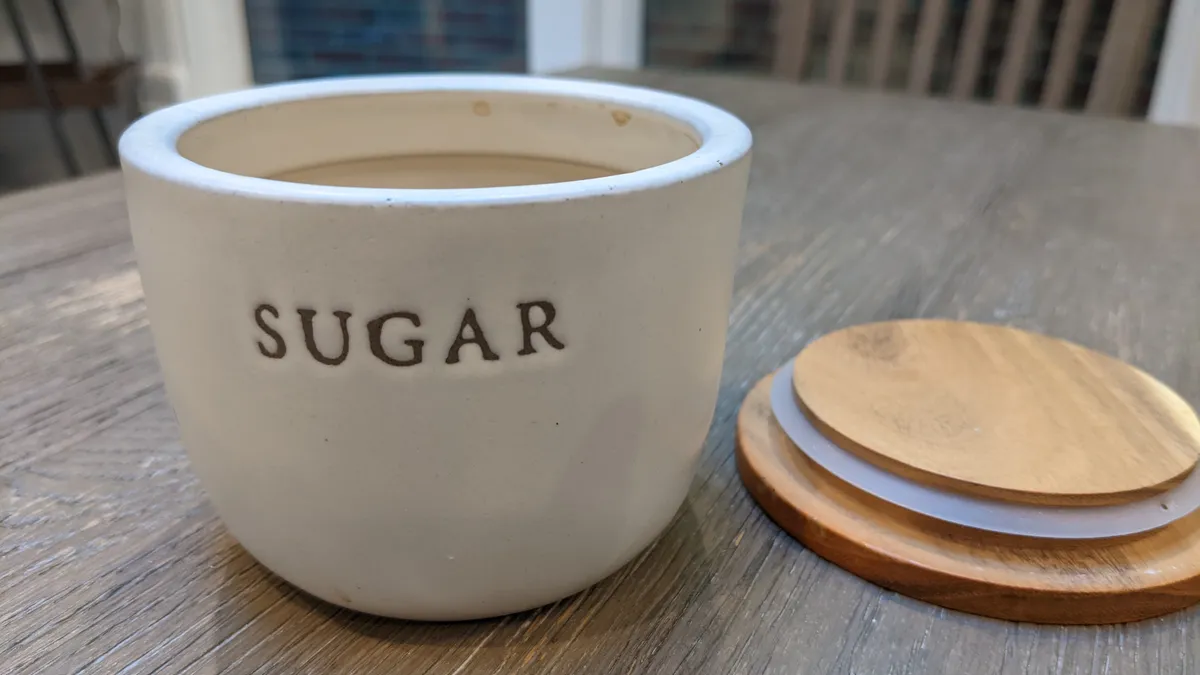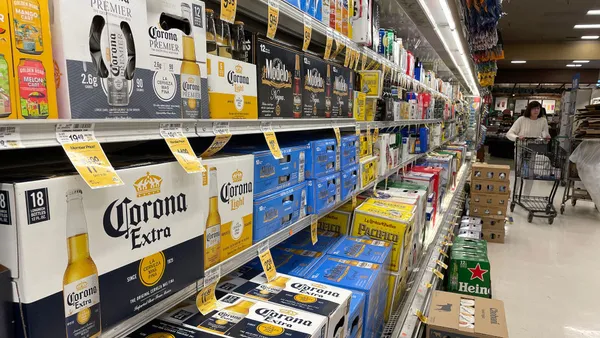Dive Brief:
- Seventy percent of consumers prioritize taste over a product’s sugar content while 62% of consumers say price is more important than sugar content when purchasing food or drinks, according to a new report from FONA International. When it comes to cutting specific items from their diet, 58% are shunning carbonated soft drinks while 54% are cutting candy and 51% are cutting baked goods.
- Half of consumers ages 24 and older are aiming to reduce their overall sugar intake, which is an 8% increase from 2019. Only 31% of consumers ages 18 to 23 are hoping to reduce their sugar intake while 38% of consumers in this segment believe they consume an appropriate amount of sugar.
- Over the last several years, consumer concerns about the amount of sugar they eat have grown as per capita consumption drops, with many opting to cut overall intake in lieu of selecting products that contain artificial sweeteners.
Dive Insight:
Several studies over recent years have shown a growing consumer base looking to curb their sugar consumption. According to FONA International's report, people are using a variety of methods to avoid it. Roughly two-thirds opt for water instead of caloric beverages, while 37% are eliminating certain foods. Another third are no longer adding table sugar to their food and drinks. Thirty percent rely on the Nutrition Facts Panel to choose foods and beverages with less sugar.
While groups like the American Medical Association have previously called on the FDA to add front-of-pack warning labels to foods that contain a high level of sugar, it has not yet been required. In 2018, the agency, however, provided guidelines for the Nutrition Facts label to call out the amount of added sugar in a product.
Food manufacturers have responded by launching a variety of low- and no-sugar foods in response. There has been a 54% increase in products with a sugar reduction claim since 2017, according to the FONA International study. The move is likely a winning tactic to caching sugar-conscious consumers’ attention. About three-quarters of consumers listed no-sugar-added claims as important when shopping for products.
Some grocers have followed suit with their private label. For example, Raley's has worked to cut out sugar-sweetened sodas from its private label offerings in recent years. When recently announcing new packaging and flavors for Soleil, Albertsons emphasized that the private label line of sparkling water does not contain added sugars or sweeteners.
Meanwhile, manufacturers in the soda and candy segment have responded with new product formulations aimed at sugar-conscious consumers. Wave Soda entered the market with a soda containing no added sugar or artificial sweeteners, while Limitless launched a lightly caffeinated sparkling water to compete with traditional sodas. Meanwhile, Hershey has embraced the trend by producing more low- and no-sugar varieties of its classic candies. The brand estimates that it could boost its annual revenue anywhere between $500 million and $1 billion.
Even with consumers’ increasing focus on reducing sugar, the FONA International study shows other factors like taste and price still lead their decision-making process. According to research from the International Food Information Council, despite several moves to lower sugar in yogurt, 48% of consumers still list taste as the leading factor for eating the product. That is perhaps why there has also been the growth of indulgent foods like cookies and chocolate that pack a punch in sugar. Even prior to the pandemic, companies like Kellogg and General Mills were sweetening up their breakfast bowls with cereals that include Nutter Butter or Peeps.













